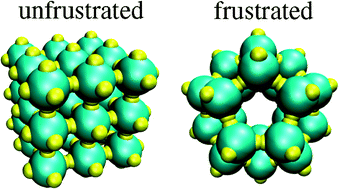Controlling crystallization and its absence: proteins, colloids and patchy models†
Abstract
The ability to control the crystallization behaviour (including its absence) of particles, be they biomolecules such as globular

* Corresponding authors
a
Physical and Theoretical Chemistry Laboratory, Oxford University, South Parks Road, Oxford, UK
E-mail:
jonathan.doye@chem.ox.ac.uk
Fax: +44 (0)1865 275410
Tel: +44 (0)1865 275426
b Rudolf Peierls Centre for Theoretical Physics, 1 Keble Road, Oxford, UK
c Institute of Chemical Sciences and Engineering, BCH 4109 Swiss Federal Institute of Technology EPFL, Lausanne, Switzerland
d School of Physics and Astronomy, University of Leeds, UK
e Department of Chemistry, University of Cambridge, Lensfield Road, Cambridge, UK
The ability to control the crystallization behaviour (including its absence) of particles, be they biomolecules such as globular

 Please wait while we load your content...
Something went wrong. Try again?
Please wait while we load your content...
Something went wrong. Try again?
J. P. K. Doye, A. A. Louis, I. Lin, L. R. Allen, E. G. Noya, A. W. Wilber, H. C. Kok and R. Lyus, Phys. Chem. Chem. Phys., 2007, 9, 2197 DOI: 10.1039/B614955C
To request permission to reproduce material from this article, please go to the Copyright Clearance Center request page.
If you are an author contributing to an RSC publication, you do not need to request permission provided correct acknowledgement is given.
If you are the author of this article, you do not need to request permission to reproduce figures and diagrams provided correct acknowledgement is given. If you want to reproduce the whole article in a third-party publication (excluding your thesis/dissertation for which permission is not required) please go to the Copyright Clearance Center request page.
Read more about how to correctly acknowledge RSC content.
 Fetching data from CrossRef.
Fetching data from CrossRef.
This may take some time to load.
Loading related content
